How to Analyze Call Arrival Rate for Call Center Efficiency
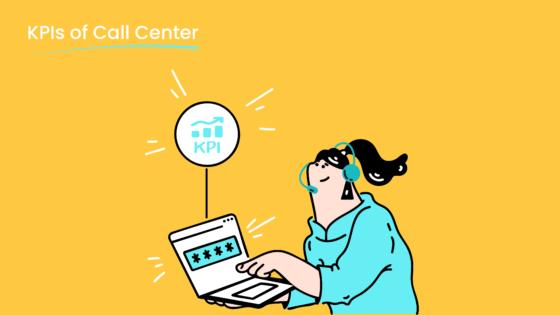
Call Arrival Rate (CAR) measures the frequency of incoming calls to your call center within a specific timeframe. It serves as a vital metric for understanding call volume trends and peak periods. A high CAR often reflects customer trust and can boost sales for businesses relying on phone interactions. However, inaccurate CAR estimates may lead to poor resource allocation, costing companies up to 10% of their annual revenue.

To optimize call center efficiency, you need tools that provide real-time CAR tracking and analysis. Sobot's Voice/Call Center offers advanced features like intelligent IVR and AI-powered voicebots, enabling you to monitor CAR seamlessly while improving customer satisfaction and reducing operational costs.
Understanding Call Arrival Rate (CAR)
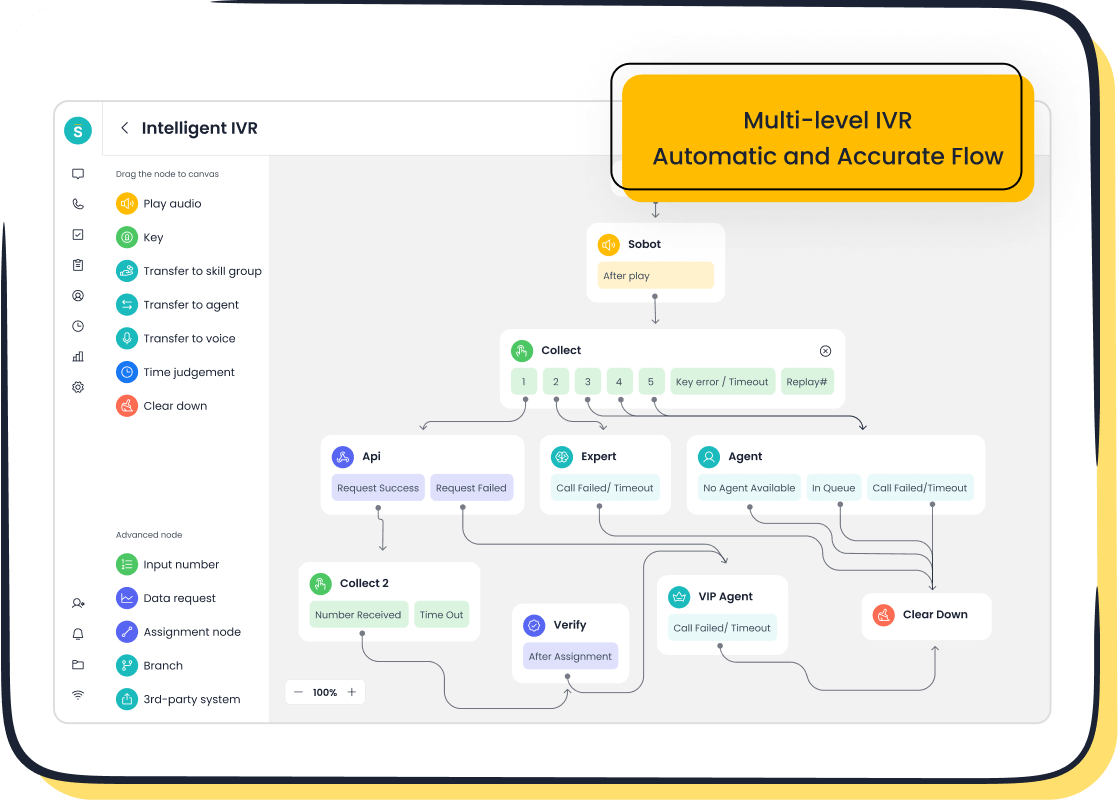
What is Call Arrival Rate?
Definition and significance in call center operations
Call Arrival Rate (CAR) is a key performance indicator that measures the number of incoming calls received by a call center within a specific time frame. This metric helps you understand call volume trends, enabling better management of both inbound and outbound operations. For example, if your call center handles 500 calls during a 10-hour shift, the CAR would be 50 calls per hour.

Monitoring CAR is essential for maintaining efficiency in both inbound call centers and outbound call centers. It ensures that you allocate resources effectively, reducing wait times and improving customer satisfaction. Tools like Sobot's Voice/Call Center simplify this process by providing real-time CAR tracking and analysis, helping you stay ahead of fluctuating call volumes.
Common time intervals for CAR measurement (hourly, daily, weekly)
You can measure CAR over various intervals, such as hourly, daily, or weekly, depending on your operational needs. Hourly measurements are ideal for identifying peak periods during the day, while daily or weekly intervals help you spot broader trends. For instance, call volumes often spike during holidays or promotional events. The table below highlights common factors influencing CAR:
| Time Factor | Call Volume Pattern |
|---|---|
| Weekdays | Higher call volumes during business hours |
| Evenings | Lower call volumes during evenings |
| Weekends | Generally lower call volumes compared to weekdays |
By analyzing these patterns, you can adjust staffing levels and improve service quality.
Why is Call Arrival Rate important?
Impact on customer experience and satisfaction
CAR directly affects customer satisfaction. High call volumes without adequate staffing can lead to long wait times, increasing the likelihood of call abandonment. Conversely, a well-managed CAR ensures that customers receive timely assistance, enhancing their overall experience. For example, when customers face product issues, they are more likely to call for support. Addressing these calls promptly can significantly boost satisfaction levels.
Role in resource planning and staffing
Understanding CAR is crucial for effective resource planning. It allows you to align staffing levels with call volume trends, ensuring that your team can handle both inbound and outbound calls efficiently. Insufficient staffing can lead to overwhelmed agents and dissatisfied customers, while overstaffing increases operational costs. Sobot's Voice/Call Center offers features like real-time monitoring and predictive analytics, helping you optimize your workforce and maintain a balance between efficiency and cost.
How to Calculate Call Arrival Rate
Step-by-Step Guide
Formula: Total Calls Received ÷ Time Period
The call arrival rate formula is straightforward. Divide the total number of incoming calls by the time period during which they were received. This calculation helps you determine the average number of calls per unit of time, whether it's minutes, hours, or days. For example, if your call center receives 500 calls in a 10-hour workday, the formula would look like this:
Call Arrival Rate = Total Calls Received ÷ Time Period
Call Arrival Rate = 500 ÷ 10
Call Arrival Rate = 50 calls per hour
This formula provides a clear picture of call volume trends, enabling you to plan resources effectively.
Example calculation for a call center scenario
Here’s a practical example:
| Description | Value |
|---|---|
| Total Number of Incoming Calls | 4000 |
| Total Time Period (in minutes) | 1440 |
| Call Arrival Rate Formula | Number of Calls Received ÷ Time Period |
| Call Arrival Rate Calculation | 4000 ÷ 1440 = 2.78 |
| Resulting Call Arrival Rate | 2.78 calls per minute |
This table demonstrates how to apply the call arrival rate formula to calculate the average number of calls per minute.
Tools for CAR Calculation
Features of Sobot's Voice/Call Center for CAR tracking
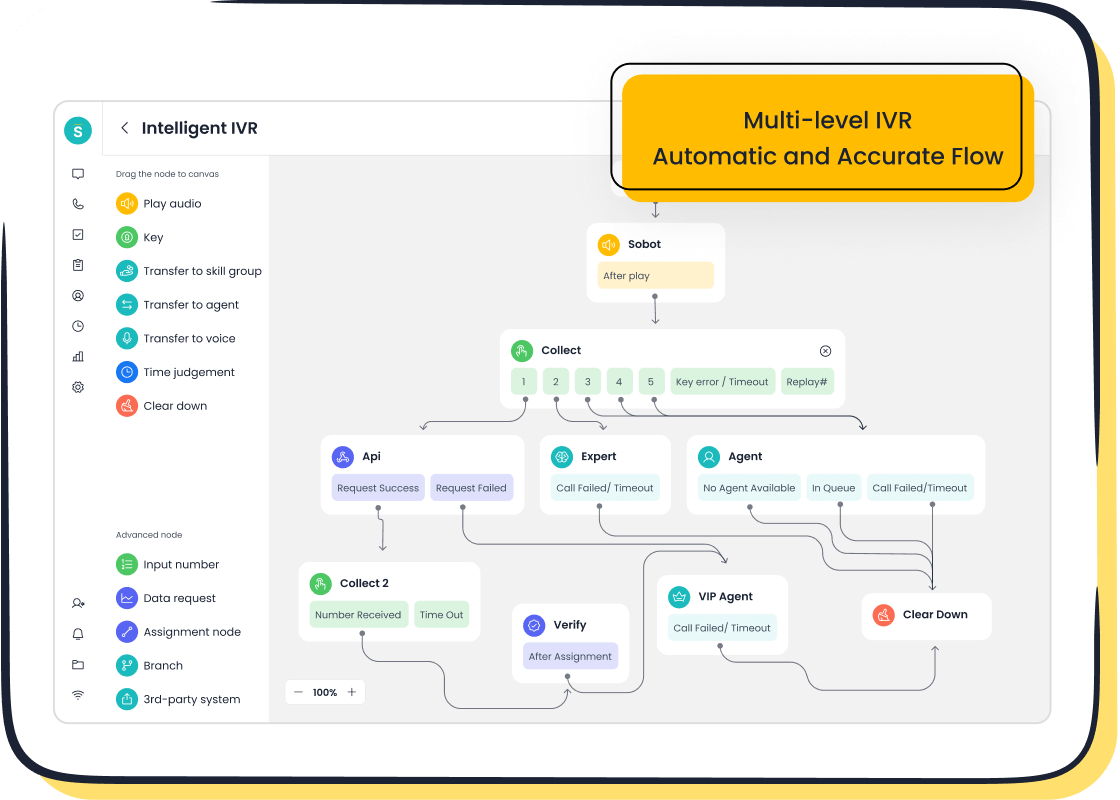
Sobot's Voice/Call Center simplifies CAR tracking with advanced features like real-time monitoring and intelligent IVR. These tools allow you to analyze call data instantly, ensuring accurate calculations. The platform also integrates seamlessly with CRM systems, enabling you to access customer information while tracking call arrival rates.
Benefits of automated CAR monitoring
Automated CAR monitoring saves time and reduces errors. Sobot's Voice/Call Center enhances efficiency by providing predictive analytics and AI-powered voicebots. These features improve customer satisfaction rates, as shown in the chart below:

With Sobot, you can reduce inbound discussion rates by 20% and achieve a customer satisfaction score of 97%. These benefits make automated CAR monitoring an essential tool for optimizing call center operations.
The Importance of Analyzing Call Arrival Rate
Enhancing Customer Experience
Reducing wait times and improving call answer rate
Analyzing the call arrival rate (CAR) helps you reduce wait times by aligning resources with call volume. A good call answer rate ensures customers receive prompt assistance, which directly impacts their satisfaction. For example, an inbound call center that monitors CAR can identify peak hours and allocate more agents during those times. This strategy improves the call answer rate for inbound calls, ensuring fewer customers abandon calls due to long waits.
Studies show that engaging customers through timely responses increases loyalty and retention. Additionally, a high call answer rate for outbound calls allows businesses to connect with more customers, creating opportunities for upselling and cross-selling. By reducing wait times, you not only enhance the quality of customer service but also build trust and loyalty.
Avoiding call abandonment during peak hours
Call abandonment often occurs when customers face long hold times during peak hours. Monitoring CAR allows you to predict these busy periods and prepare accordingly. For instance, if your average incoming call volume spikes during lunch hours, you can schedule additional call center agents to handle the load. This proactive approach minimizes the call abandonment rate and ensures more answered incoming calls.
By avoiding abandoned calls, you improve the overall customer experience and maintain a competitive edge. Customers who receive timely answers are more likely to stay loyal to your brand, contributing to long-term success.
Optimizing Resource Allocation
Aligning staffing with call volume trends
Understanding CAR enables you to align staffing levels with call volume trends. For example, if your inbound call center receives 70% of its incoming calls in the morning, you can schedule more agents during that period. This ensures that answered calls remain high while avoiding overstaffing during quieter hours.
Sobot's Voice/Call Center offers predictive analytics to help you forecast call volumes accurately. These insights allow you to optimize staffing levels, ensuring operational efficiency without unnecessary costs.
Preventing overstaffing or understaffing
Overstaffing increases operational costs, while understaffing leads to overwhelmed agents and dissatisfied customers. Analyzing CAR helps you strike the right balance. For instance, if your outbound call center handles 1,000 outbound calls daily, you can use CAR data to determine the exact number of agents needed to maintain a good call answer rate.
By preventing staffing mismatches, you improve the quality of customer service and ensure that both inbound and outbound operations run smoothly.
Improving Operational Efficiency
Identifying inefficiencies in call handling
Analyzing CAR helps you identify inefficiencies in call handling. For example, if your call center has a low call answer rate despite adequate staffing, it may indicate issues like poor call routing or long agent response times. Tools like Sobot's Voice/Call Center provide real-time monitoring to pinpoint these inefficiencies.
By addressing these issues, you can improve the call answer rate for inbound calls and enhance overall call center efficiency.
Meeting service level agreements (SLAs)
Service level agreements often require a specific percentage of answered calls within a set time. Monitoring CAR ensures you meet these targets by adjusting staffing levels and improving call handling processes. For instance, if your SLA demands a 90% call answer rate, analyzing CAR helps you allocate resources effectively to achieve this goal.
Meeting SLAs not only boosts customer satisfaction but also strengthens your reputation as a reliable service provider.
Factors Influencing Call Arrival Rate
Internal Factors
Marketing campaigns and promotions
Marketing campaigns and promotions play a significant role in influencing call arrival rates. When businesses launch successful campaigns, they often see a surge in both inbound and outbound calls. For example, a promotional discount on a popular product can lead to increased incoming calls from customers seeking more details or placing orders. Outbound teams may also need to follow up with leads generated during these campaigns.
The table below highlights how marketing efforts impact call volumes:
| Evidence Type | Description |
|---|---|
| Marketing Influence | Marketing campaigns can significantly impact consumer behavior and increase call arrival rates. |
| Demand Increase | Successful marketing efforts raise consumer demand, leading to increased call volumes. |
By analyzing these patterns, you can prepare your call center to handle the influx of calls effectively. Tools like Sobot's Voice/Call Center provide real-time monitoring, helping you adjust resources during promotional periods.
Product launches or updates
Product launches or updates often lead to spikes in incoming calls. Customers may call to inquire about new features, pricing, or availability. For instance, when a tech company releases a new smartphone, inbound calls from curious buyers typically increase. Outbound teams may also need to contact existing customers to promote upgrades or trade-in offers.
Sobot's Voice/Call Center can help you manage these fluctuations by offering features like intelligent IVR and call tracking. These tools ensure your team handles both inbound and outbound calls efficiently during product launches.
External Factors
Seasonal trends and holidays
Seasonal trends and holidays significantly influence call arrival rates. Retail businesses often experience a surge in incoming calls during the holiday shopping season. Customers frequently inquire about prices, gift ideas, and shipment dates. Similarly, outbound teams may need to contact customers with special holiday offers.
- Seasonal factors like school schedules, weather, and holidays impact call volumes.
- Retailers often face unpredictable spikes during holiday seasons or special promotions, leading to backlogs.
- Economic events, such as recessions, can also increase call volumes as customers inquire about service changes or discounts.
By understanding these trends, you can align staffing levels to meet demand. Sobot's predictive analytics feature helps you forecast seasonal call volumes, ensuring your team is prepared for busy periods.
Industry-specific events or crises
Industry-specific events or crises can cause sudden changes in call arrival rates. For example, financial institutions may see a rise in incoming calls during economic downturns as customers seek advice or assistance. Similarly, healthcare providers often experience increased call volumes during public health crises.
Sobot's Voice/Call Center offers real-time monitoring and AI-powered voicebots to help you manage these unexpected spikes. These tools ensure your call center remains efficient, even during challenging times.
Strategies to Analyze and Optimize Call Arrival Rate
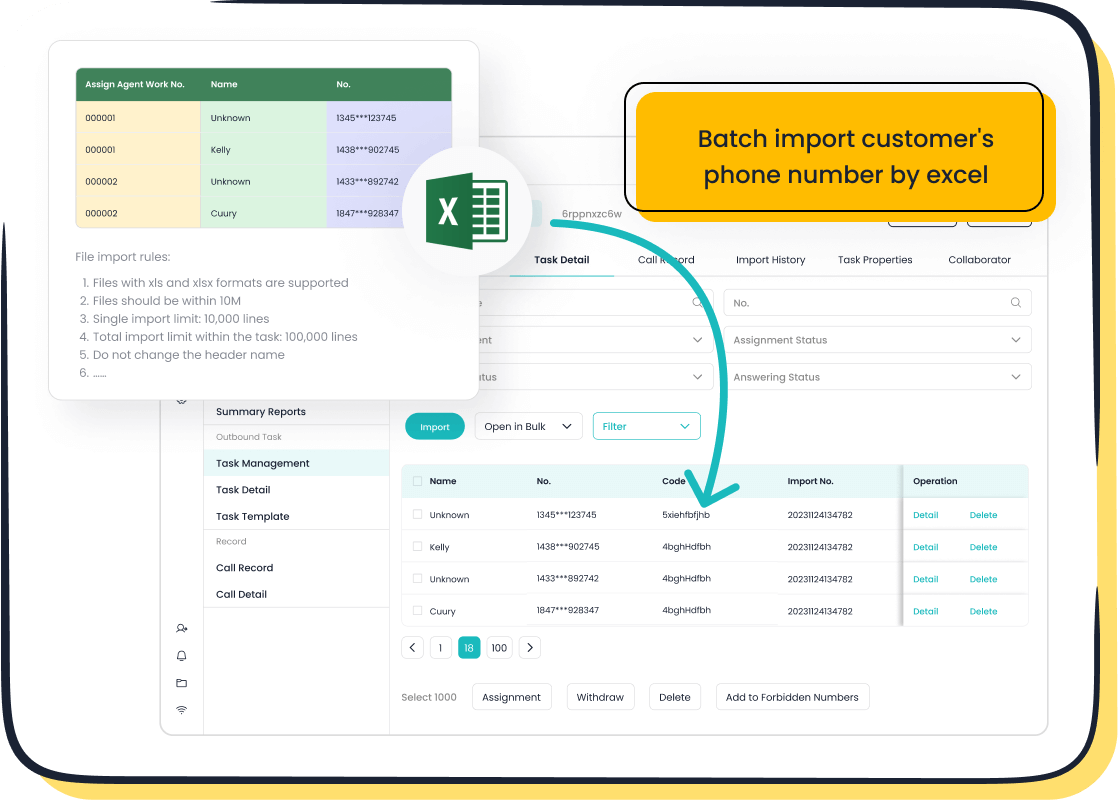
Forecasting and Planning
Using historical data to predict call volumes
Historical data provides valuable insights into call volume trends. By analyzing past patterns, you can predict future call volumes and prepare your team accordingly. For example, time series analysis helps identify seasonal trends, while ARIMA models use historical data to forecast future call arrival rates. Advanced methods like Triple Exponential Smoothing account for both trends and seasonality, improving accuracy.
| Method | Description |
|---|---|
| Triple Exponential Smoothing | Accounts for trends and seasonality in historical data to improve forecasting accuracy. |
| ARIMA | Uses past data points to predict future values based on identified patterns. |
| Neural Networks | Analyzes large datasets and improves forecasting accuracy through pattern recognition. |
Sobot's Voice/Call Center leverages predictive analytics to help you forecast call volumes effectively. These tools allow you to align resources with expected demand, ensuring a high call answer rate even during peak periods.
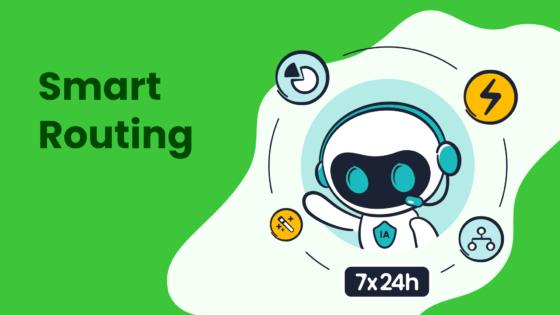
Leveraging Sobot's Voice/Call Center for predictive analytics
Predictive analytics in Sobot's Voice/Call Center uses AI to analyze historical data and predict call arrival rates. This feature helps you optimize call arrival rate by identifying peak hours and adjusting staffing levels. For example, if your call center experiences a 30% increase in call volume during holidays, Sobot's tools can forecast this trend and recommend resource adjustments. This proactive approach ensures you maintain a high call answer rate and reduce customer wait times.
Workforce Management
Scheduling staff based on CAR patterns
Aligning staff schedules with CAR patterns ensures efficient resource allocation. For instance, if your call center receives 70% of calls in the morning, you can schedule more agents during that time. This strategy reduces wait times and improves the call answer rate. Studies show that understanding peak times enhances operational efficiency and minimizes agent burnout. Sobot's Voice/Call Center provides real-time CAR tracking, enabling you to adjust schedules dynamically and optimize call arrival rate.
Cross-training agents for flexibility
Cross-training agents prepares them to handle various tasks, improving flexibility during unexpected call volume spikes. For example, agents trained in both inbound and outbound calls can switch roles as needed. This adaptability ensures a consistent call answer rate, even during high-demand periods. Sobot's unified workspace simplifies this process by providing agents with all the tools they need to manage calls efficiently.
Quality Assurance and Monitoring
Regularly reviewing CAR data for anomalies
Regular CAR data reviews help identify anomalies that may indicate inefficiencies. For example, a sudden drop in the call answer rate could signal issues with call routing or staffing. Metrics like Mean Opinion Score (MOS) provide insights into audio quality, while device reports assess the effectiveness of call-handling equipment.
| Metric | Description |
|---|---|
| Mean Opinion Score (MOS) | A subjective measure of audio quality rated from 0 to 5, providing insights into user experience. |
| Device Reports | Assess device usage by volume and MOS score, helping to evaluate the effectiveness of devices used in calls. |
Sobot's real-time monitoring tools make it easy to track these metrics and address inefficiencies promptly.
Implementing feedback loops to address inefficiencies
Feedback loops improve call center performance by addressing inefficiencies. For example, customer feedback can highlight areas where agents need additional training. Regularly reviewing CAR data and implementing changes based on feedback ensures a high call answer rate. Sobot's Voice/Call Center integrates feedback mechanisms, helping you refine processes and enhance customer satisfaction.
Understanding and analyzing Call Arrival Rate (CAR) is essential for improving call center efficiency. It helps you optimize staffing, reduce wait times, and enhance customer satisfaction. By leveraging CAR insights, you can align resources with call volume trends, ensuring seamless operations and better service delivery.
Tools like Sobot's Voice/Call Center simplify this process with features such as real-time monitoring and predictive analytics. These capabilities allow you to forecast call volumes, allocate resources effectively, and maintain high service standards.
The benefits of analyzing CAR extend beyond operational improvements. The table below highlights how it impacts various aspects of your business:
| Benefit | Explanation |
|---|---|
| Customer Retention | Active engagement through calls enhances customer loyalty and retention. |
| Competitive Advantage | High call arrival rates provide a competitive edge by keeping businesses connected with customers. |
| Opportunity for Upselling | More interactions lead to increased opportunities for upselling and cross-selling, boosting revenue. |
| Better Customer Engagement | High CAR indicates active customer engagement, fostering stronger relationships and loyalty. |
| Improved Customer Service | Engaged teams can resolve issues faster, enhancing customer satisfaction. |
| Market Feedback | A steady stream of calls offers real-time feedback for product and service improvements. |
| Data for Decision-Making | More calls generate data for identifying trends and shaping business strategies. |
| Brand Visibility | High CAR indicates strong brand presence, leading to increased recognition and referrals. |
| Efficient Resource Utilization | Consistent call flow allows for optimal staffing and resource allocation, reducing costs. |
| Market Responsiveness | High CAR enables quick adaptation to market changes and customer needs. |
By implementing the strategies discussed, you can transform your call center into a hub of efficiency and customer satisfaction. Start leveraging tools like Sobot's Voice/Call Center to unlock the full potential of CAR and drive your business forward.
FAQ
What is the ideal Call Arrival Rate for a call center?
The ideal Call Arrival Rate depends on your industry and customer needs. For example, retail call centers may handle 50-100 calls per hour during peak times. Tools like Sobot's Voice/Call Center help you monitor and adjust CAR to meet your specific goals.
How can Sobot's Voice/Call Center improve Call Arrival Rate analysis?
Sobot's Voice/Call Center offers real-time monitoring, predictive analytics, and intelligent IVR. These features simplify CAR tracking and help you align staffing with call volume trends. For example, predictive analytics can forecast a 30% increase in calls during holidays, allowing you to prepare effectively.
Why does Call Arrival Rate fluctuate?
CAR fluctuates due to factors like marketing campaigns, seasonal trends, or product launches. For instance, a holiday sale might double your incoming calls. Sobot's tools provide insights into these patterns, helping you manage resources efficiently.
Can analyzing Call Arrival Rate reduce operational costs?
Yes, analyzing CAR helps you optimize staffing and avoid overstaffing or understaffing. For example, aligning agent schedules with peak hours reduces unnecessary labor costs. Sobot's automated CAR monitoring ensures accurate data for cost-effective planning.
How does Call Arrival Rate impact customer satisfaction?
A well-managed CAR reduces wait times and improves call answer rates. For example, addressing peak-hour calls promptly prevents call abandonment. Sobot's AI-powered voicebots enhance efficiency, ensuring customers receive timely assistance.
See Also
Enhancing Call Center Efficiency Through Effective Monitoring
Understanding The Efficiency Of Call Center Automation
Effective Strategies For Quality Management In Call Centers
Best 10 Call Center Analytics Tools To Use In 2024
Comprehensive Guide To Quality Assurance Software For Call Centers